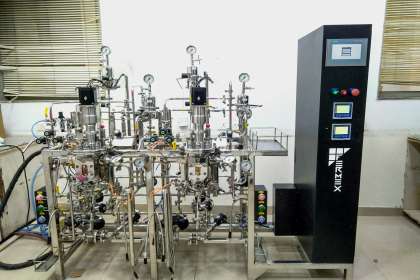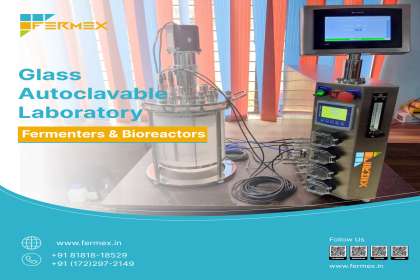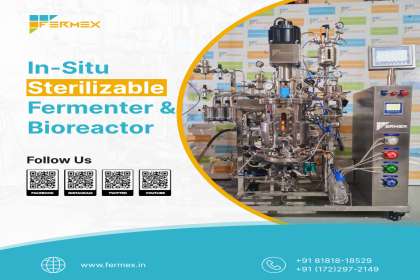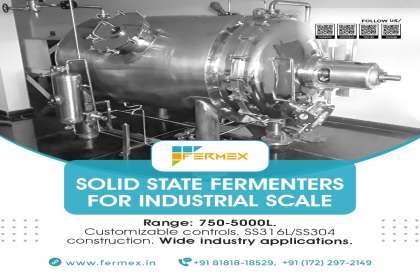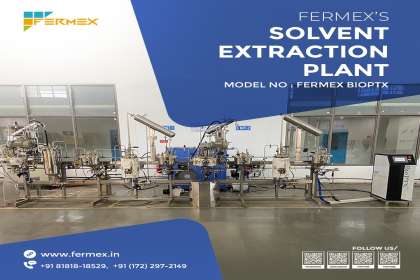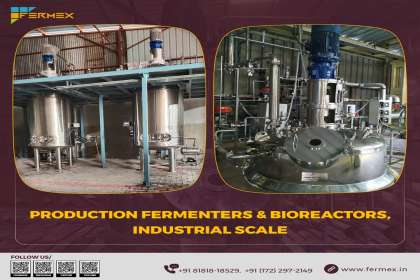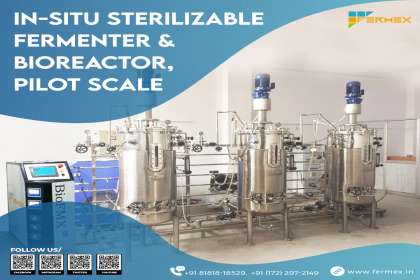Innovating Meat Production: The Role of Fermenters and Bioreactors

Use Fermenters in Production of Meat
Fermenters are employed in the production of certain fermented meat products. In this process, meat is selected and prepared by grinding or chopping it into small pieces. The meat is then mixed with other ingredients such as spices, seasonings, and starter cultures.
- Fermenters provide a controlled environment for the growth and activity of the starter cultures, typically lactic acid bacteria. These bacteria ferment the sugars in the meat, producing lactic acid and other compounds.
- This fermentation process imparts distinct Flavors, textures, and extended shelf life to the meat product. Fermenters ensure consistent and controlled fermentation conditions, leading to the development of unique fermented meat products.
Key Stages involved in Process of Making Meat using Fermenters
- Meat Selection and Preparation: High-quality meat is selected and prepared by grinding, chopping, or slicing it into desired forms or sizes. The meat may undergo additional steps like marination or curing, depending on the specific recipe or desired outcome.
- Starter Culture Inoculation: Fermenters are utilized to inoculate the meat with specific starter cultures. These cultures can include bacteria, such as lactic acid bacteria or other microorganisms, that contribute to the fermentation process. The starter cultures are added to the meat to initiate controlled fermentation.
- Fermentation: The meat, along with the starter cultures, is placed in the fermenter. The fermenter provides a controlled environment, including temperature, humidity, and oxygen levels, to support the growth and activity of the starter cultures. During fermentation, the starter cultures convert sugars present in the meat into lactic acid, leading to pH reduction and flavor development.
- Aging and Flavor Development: After fermentation, some meat products may undergo a period of aging to further develop flavors, textures, and desired characteristics. The aging process can occur in the fermenter or be transferred to other controlled environments such as curing chambers or specific storage conditions.
- Drying and Curing (if applicable): In certain types of fermented meat products, additional steps such as drying and curing may be involved. These processes help to further reduce moisture content, improve preservation, and enhance the desired flavor profile.
- Packaging: Once the desired fermentation, aging, and drying/curing processes are complete, the fermented meat products are typically portioned, packaged, and labeled for storage, distribution, and sale.


Fermex Solutions LLP Manufactures Fermenters that can be used for these Production
- Glass Autoclavable Fermenter (Lab scale)
- In situ Solid State Fermenter (Industrial scale)
- In situ Solid State Fermenter (Pilot scale)
- In situ Submerged Fermenter (Industrial scale)
- In situ Submerged Fermenter (Pilot scale)
Benefits of Fermenters in the Production of Meat:
Fermenters offer several benefits in the production of meat, particularly in methods that involve controlled fermentation. Here are the key advantages of using fermenters:
- Flavor Development:>Fermenters contribute to the development of unique flavors in meat products. Controlled fermentation allows for the production of desirable flavor compounds by the action of specific starter cultures or microorganisms. This results in the creation of distinct and characteristic flavors that enhance the overall taste experience of the meat.
- Preservation: Fermentation can improve the shelf life of meat products. The fermentation process creates an acidic environment that inhibits the growth of spoilage bacteria and extends the product’s preservation. Fermenters provide the controlled conditions necessary for the growth of beneficial bacteria that inhibit harmful microorganisms.
- Texture Enhancement: Fermentation can also impact the texture of meat products. The breakdown of proteins during fermentation can lead to a more tender and succulent texture. Fermenters enable controlled fermentation conditions that promote the desired texture development.
- Safety and Microbial Control: The use of fermenters helps ensure the safety of meat products by promoting the growth of beneficial bacteria and inhibiting the growth of harmful pathogens. The controlled fermentation environment minimizes the risk of contamination and supports the growth of lactic acid bacteria or other beneficial microorganisms that contribute to food safety.
- Customization and Innovation: Fermenters offer flexibility and opportunities for experimentation and innovation in meat production. Different starter cultures or specific microorganisms can be employed in the fermenter to create a wide range of flavors, textures, and specialty meat products. This allows producers to cater to diverse consumer preferences and explore new product offerings.
- Consistency and Quality Control: Fermenters provide the ability to maintain consistency and quality in meat production. Controlled fermentation conditions ensure that each batch of fermented meat products exhibits similar flavors, textures, and overall quality. This consistency allows producers to meet consumer expectations and build brand reputation.
- Reduction of Additives: Controlled fermentation can reduce the need for certain additives in meat production. The natural fermentation process contributes to flavor, preservation, and texture, potentially reducing the reliance on artificial additives or excessive use of salt, sugar, or other additives.









